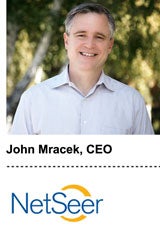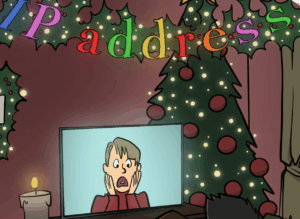 Ad-targeting company Netseer is one of the pioneers in contextual ad targeting, but as advertisers changed their focus from placements to audiences, the 8-year-old company knew it had to keep up with the times.
Ad-targeting company Netseer is one of the pioneers in contextual ad targeting, but as advertisers changed their focus from placements to audiences, the 8-year-old company knew it had to keep up with the times.
Netseer’s products include media-buying services and a contextual links ad network. And this week it launched a viewability solution called the Predictive Viewability Engine. AdExchanger spoke with CEO John Mracek.
AdExchanger: How has Netseer’s strategy changed since we spoke with you in 2011?
JOHN MRACEK: When we talked a few years ago, the media was focused on contextual placements. But in the environment of programmatic, there is a greater focus on pursuing cookies, retargeting, lookalikes and other types of audience-based models.
We used the same technology from our Concept Graphs [technology that analyzes search queries and Web page content to optimize placements] and applied the same intent engine to people as well as pages and so our offering has gotten much broader where we have a brand product focused more on content adjacency and a response product where the client wants to achieve a particular response goal.
What is your mobile strategy?
On the mobile side, where there is access to contextual data, we are able to target within that context. We also use info from a log-in or a universal ID and other identifiers that you can sync with your audience pool, to target on mobile.
We also have a second business [ConceptLinks] that uses the same technology to surface the concepts on a page that a user would be interested in and that becomes a related search suggestion. If the user does a search at that moment, you’ve [created] a monetization event because the search click gets paid, Yahoo – we’re a Yahoo search partner – pays us and we pay our monetization partner.
On the mobile side, that business is essentially putting up text search suggestions, which in a small device format is very powerful. We have a big push on the mobile side as well, because the ad unit lends itself to having better response rates since you’re just providing one or two relevant search suggestions on the page and it doesn’t destroy the user experience.
What do you think about Yahoo’s Gemini product, which combines mobile search with native ads?
It could be an interesting opportunity for us, but there’s a bit of a wait and see in terms of how that plays out.
Is last-click attribution still an important metric?
One of the primary metrics is user attribution. An advertiser might say our CPA goal is $500 and … whoever touches the person last is going to get credit for that sale.
There’s a lot of money being spent on cookie chasing, and it’s hitting the right people, but it gives too much credit to whoever gets the last touch. The big issue is that user attribution model doesn’t have a requirement around viewability.
Now that the Media Rating Council (MRC) has lifted its advisory on viewability metrics, how does that impact your business?
[Viewability] will have a huge impact across direct and programmatic sales, particularly in the programmatic space. We’re thrilled it helps publishers and advertisers get away from the perceived value [of an impression].
How does your new Predictive Viewability Engine work?
Our Predictive Viewability Engine is a model to accurately predict the viewability probability of every impression available on the exchanges. We do this by analyzing viewability from multiple perspectives. One input is verified viewability data coming from our MRC-accredited partner, Alenty.
Another source is our proprietary analysis of attributes such as device, geo, time of day and other factors. Rounding this out is post-impression data, whereby past performance acts as a strong indicator of future viewability. Taken together, the engine is adaptive and self-correcting, meaning it auto-adjusts and continually learns as it goes.
What’s on your road map?
A lot of what’s happening on programmatic is a combination of retargeting plus cookie chasing to achieve some CPA goal and people are getting really good at that.
Retargeting in particular has huge value. The question is what’s next? How do we find people who haven’t already raised their hand and said I’m interested in this brand? We already do some of that through lookalike modeling, and I see it playing a bigger part in our brand and response products. As we move beyond retargeting, I think we’re on the cusp of some interesting things.











